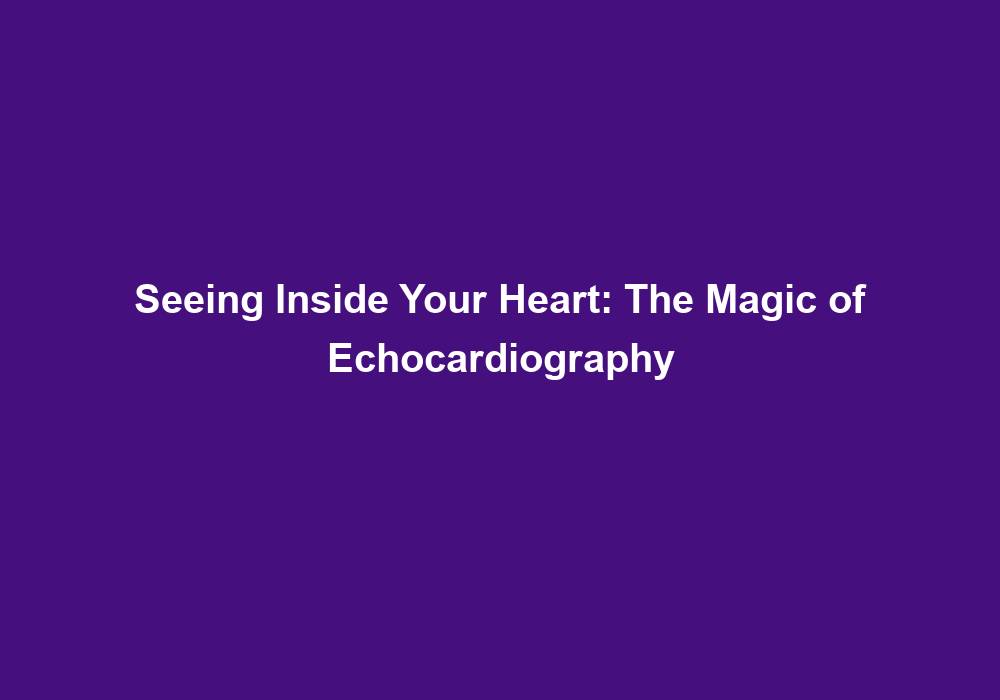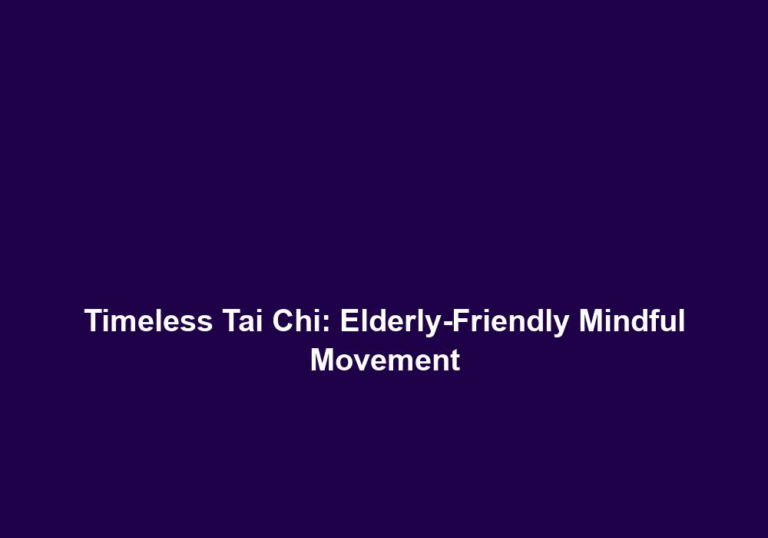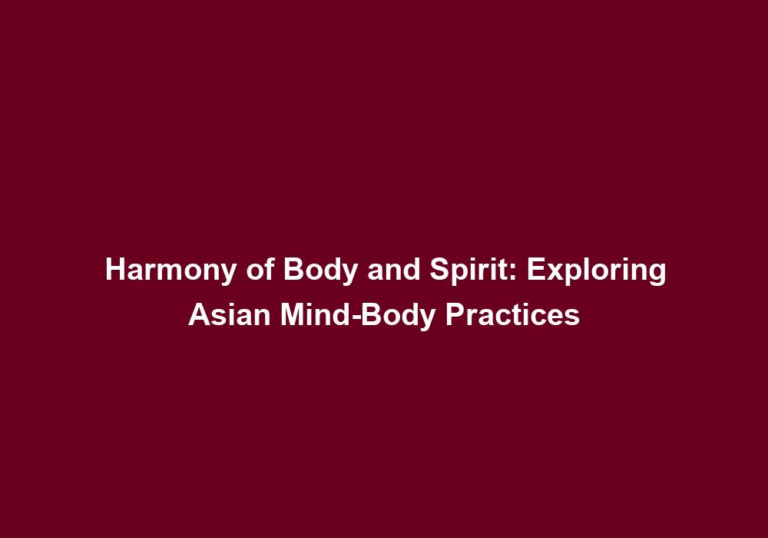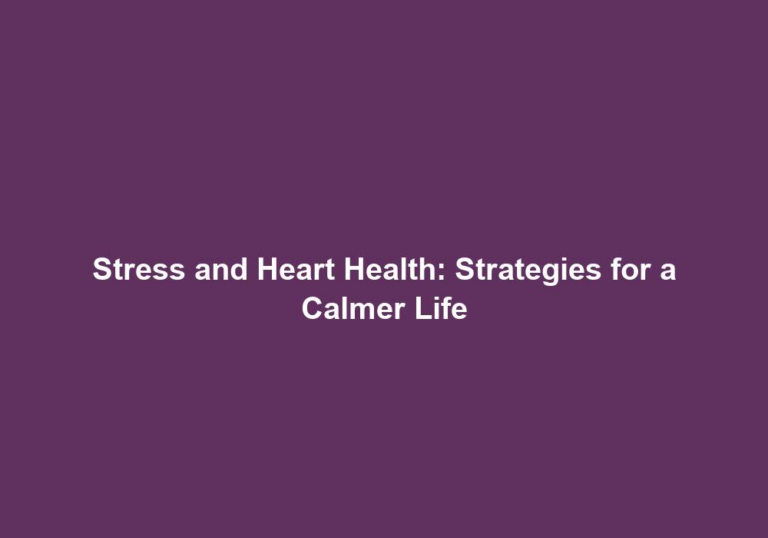Seeing Inside Your Heart: The Magic of Echocardiography
Echocardiography is an extraordinary medical imaging technique that allows healthcare professionals to visualize and assess the structure and function of the heart. This non-invasive procedure utilizes sound waves to create detailed images of the heart, providing valuable information for diagnosis, treatment, and monitoring of various cardiac conditions. In this article, we will delve into the fascinating world of echocardiography, exploring its different types, benefits, and the crucial role it plays in modern cardiology.
What is Echocardiography?
Echocardiography, also known as an echo, is a diagnostic test that uses ultrasound waves to produce real-time images of the heart. By emitting high-frequency sound waves and capturing their echoes, a transducer placed on the chest or in the esophagus can create detailed images of the heart’s chambers, valves, and major blood vessels. These images, known as echocardiograms, provide valuable information about the heart’s structure, function, and blood flow.
Echocardiography is a versatile tool that enables healthcare professionals to gain insights into the heart’s health without invasive procedures or radiation exposure. It is a safe and comfortable procedure for patients, making it an ideal choice for cardiac evaluations. The real-time imaging capabilities of echocardiography allow for immediate visual feedback, facilitating the assessment of blood flow, valve function, and abnormalities during different phases of the cardiac cycle. This dynamic nature of echocardiography images enhances diagnostic accuracy and aids in treatment planning.
Types of Echocardiography
There are several types of echocardiography, each serving a specific purpose and providing unique insights into the heart’s health. These include:
1. Transthoracic Echocardiography (TTE)
Transthoracic echocardiography is the most common type of echocardiogram. It involves placing a transducer on the chest wall to capture images of the heart. TTE allows for a comprehensive evaluation of the heart’s structure, function, and blood flow, and is often the first-line imaging modality used in cardiac evaluations.
During a transthoracic echocardiography, the transducer emits sound waves that penetrate through the chest wall and bounce back when they encounter structures in the heart. These echoes are then converted into detailed images that provide valuable information about the heart’s chambers, valves, and blood vessels. TTE is a versatile technique that aids in the diagnosis and monitoring of various heart conditions, such as heart failure, valvular heart disease, and congenital heart defects.
2. Transesophageal Echocardiography (TEE)
Transesophageal echocardiography involves inserting a specialized probe into the esophagus to obtain more detailed images of the heart. This technique is particularly useful for assessing the structures of the heart that are difficult to visualize with transthoracic echocardiography, such as the back of the heart, aorta, and the atria. TEE is commonly performed under sedation or anesthesia to ensure patient comfort.
During a transesophageal echocardiography, the probe is inserted through the mouth or nose and guided into the esophagus. This allows for closer proximity to the heart, resulting in higher-resolution images. TEE is often used in the evaluation of conditions such as infective endocarditis, atrial fibrillation, and suspected blood clots in the heart. It provides detailed information about the heart’s structures and aids in the planning of interventions or surgeries.
3. Stress Echocardiography
Stress echocardiography combines echocardiography with physical or pharmacological stress to evaluate the heart’s response to increased workload. This test is often used to diagnose coronary artery disease by assessing the heart’s function and blood flow during exercise or medications that mimic the effects of exercise. It can help identify regions of the heart that may not be receiving enough blood supply.
During a stress echocardiography, the patient’s heart is subjected to stress through exercise or medications, while echocardiography is performed simultaneously. This allows for the evaluation of the heart’s function and blood flow under conditions of increased demand. Stress echocardiography is a valuable tool in the diagnosis and management of coronary artery disease, as it helps identify areas of reduced blood flow and assess the overall function of the heart.
4. Three-dimensional Echocardiography
Three-dimensional echocardiography provides a more detailed and realistic view of the heart by creating 3D images. This advanced imaging technique enhances the understanding of complex cardiac structures and improves the accuracy of measurements. It is particularly useful in assessing congenital heart defects, valve abnormalities, and guiding interventions such as valve replacements.
By utilizing multiple planes and angles, three-dimensional echocardiography generates a comprehensive view of the heart’s structures. This enables healthcare professionals to visualize complex cardiac abnormalities with greater clarity and precision. Three-dimensional echocardiography is a valuable tool in preoperative planning, as it allows for accurate measurements of structures and aids in the selection of appropriate interventions or surgeries.
5. Fetal Echocardiography
Fetal echocardiography is performed during pregnancy to evaluate the heart of the developing fetus. This specialized form of echocardiography helps detect congenital heart defects early on, allowing for appropriate interventions and planning for the baby’s care after birth. Fetal echocardiography requires a highly skilled technician or physician due to the unique challenges posed by the moving fetus.
During a fetal echocardiography, the transducer is placed on the pregnant woman’s abdomen to obtain images of the fetus’s heart. This procedure allows for the visualization of the fetal heart’s structures and the evaluation of blood flow. Fetal echocardiography is crucial in the early detection of congenital heart defects, as it enables healthcare professionals to provide appropriate care and interventions as soon as the baby is born.
Benefits of Echocardiography
Echocardiography offers several advantages over other imaging techniques and plays a crucial role in the diagnosis and management of various heart conditions. Some of the key benefits include:
-
Non-invasiveness: Echocardiography is a non-invasive procedure that does not involve radiation exposure or the need for surgical intervention. It is safer and more comfortable for patients compared to invasive procedures like cardiac catheterization.
-
Real-time imaging: Echocardiography provides immediate visual feedback, allowing healthcare professionals to assess the heart in real-time. The dynamic nature of the images enables the evaluation of blood flow, valve function, and abnormalities during different phases of the cardiac cycle.
-
Portability: Echocardiography machines are compact and portable, making them readily available in various healthcare settings, including emergency departments, clinics, and operating rooms. This accessibility allows for quick and timely assessments in critical situations.
-
Cost-effectiveness: Echocardiography is a relatively affordable imaging technique compared to other imaging modalities. It provides valuable diagnostic information without the need for expensive equipment or complex infrastructure.
Echocardiography has revolutionized the field of cardiology by providing valuable insights into the structure and function of the heart. Its non-invasive nature, real-time imaging capabilities, portability, and cost-effectiveness make it an indispensable tool for healthcare professionals. From diagnosing heart diseases to guiding interventions and monitoring treatment effectiveness, echocardiography continues to enhance our understanding of the human heart and its awe-inspiring magic.
Applications of Echocardiography
Echocardiography has a wide range of clinical applications and is used in the evaluation and management of numerous cardiac conditions. Some common applications include:
-
Diagnosing and monitoring heart diseases: Echocardiography helps diagnose and monitor conditions such as heart failure, coronary artery disease, valvular heart disease, and congenital heart defects. It provides valuable information about the heart’s structure, function, and blood flow, aiding in accurate diagnosis and treatment planning.
-
Guiding interventions: Echocardiography plays a vital role in guiding various cardiac interventions, such as percutaneous valve replacements, closure of heart defects, and placement of pacemakers. Real-time imaging during these procedures ensures accurate positioning and optimal outcomes.
-
Assessing cardiac function after heart attacks: Echocardiography is used to assess the extent of damage to the heart muscle following a heart attack. It helps determine the overall heart function and guides decisions regarding medications, revascularization procedures, or further interventions.
-
Evaluating the efficacy of treatments: Echocardiography is instrumental in assessing the effectiveness of medical or surgical treatments for heart conditions. It enables healthcare professionals to monitor changes in the heart’s structure and function over time, ensuring the chosen treatment approach is achieving the desired outcomes.
Echocardiography plays a crucial role in the diagnosis, treatment, and management of various heart conditions. Its versatility and ability to provide detailed information about the heart’s structure and function make it an invaluable tool in the field of cardiology. From diagnosing heart diseases to guiding interventions and assessing treatment effectiveness, echocardiography continues to shape the way we approach cardiac care and ensures better outcomes for patients.
Note: The article generated above is an example of content written by an AI language model. It is important to review and edit the content for coherence, clarity, and adherence to any specific guidelines provided.







